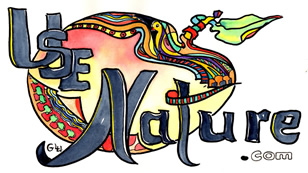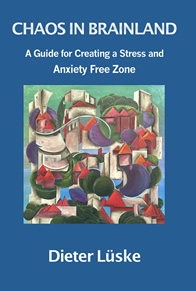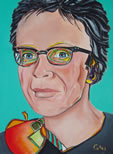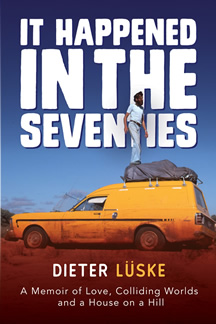useNature.com ... Holistic Health - Avoiding Emotional Traps
Emotion Counselling
Avoiding Emotional Traps
Lifestyle Online Magazine - Holistic Health Information
Article: How to control Emotions? - Emotional Traps and Responses

Article extracted from a workshop & book called:
DO YOU BELIEVE IN YOU - by Dieter Luske© - Gold Coast
... all articles, are written as workshop manuscript
... questions were asked to stimulate active participation.
- NEW BOOK - NEW BOOK - NEW BOOK - NEW BOOK - NEW BOOK - NEW BOOK - NEW BOOK - |
| NOTE FOR PRACTITIONERS: Combining Natural Therapies with Counselling modalities is what a Holistic Health is all about. - The Chaos in Brainland Book addresses this issue and provides a wide array of counselling techniques suitable to enrich a Holistic Natural Health Clinic for practitioners and patients alike. - BUY NOW |
ARTICLE NUMBER - 16 - EMOTIONS ... Avoiding Emotional Traps
How to control Emotions?
Congratulations, you have made it through the Victim Principle Chapter ..
if not click > Victim Principle to go back...
The Victim Principle can be worked out quite rationally and logically, and it is a great counselling tool.
But what about EMOTIONS?
As soon as we get into emotions and emotional responses, we may not be able to handle the simple logistics of the victim principle any more, especially if those emotions are deep seated like phobias, anxiety, depression, love, hate, etc..
Pretty heavy stuff! Surprisingly enough, even with those kinds of emotions, you can still work with the victim principles techniques.
-
First: you work out your emotions logically at a time when you are not overcome by those emotions.
-
Second: you decide how you would rather react and programme your subconscious mind accordingly.
How? With affirmations and Anchors. -
Third: You have to be aware of your emotions. What specific emotions are you feeling? Do you know what those emotions really mean and how you can change them?
This is the chapter which will answer your questions and bring a different perspective to your knowledge of emotions.
Do you sometimes think it would be better not to have any emotions?
Think again. Once you have been through this chapter you will view emotions in a different light. Again, awareness is the key. So, let me say that I hope we all have emotions, and can experience those emotions to the fullest.
Unfortunately, all of us, (some more than others), are in some way trapped within our emotional responses. This is similar to the way we may be trapped in a limited belief system. That means that we are to a certain extent under the control of our emotional responses. Control in this sense means, that there seems to be no other choice, which makes us the victim. We definitely have to change that and start taking control of our emotional responses in a positive sense.
Positive in this context, means to positively and creatively choose the right emotional response for the right situation.
It does not mean the suppression of unwanted emotions.
Some of us are already aware of our emotional traps. Being aware means we can work on change, which is a creative response. Other people are not aware, or may even deny that they are stuck in an emotional trap. That would be the victim position.
Are any of your emotions hindering or limiting you from doing what you really would love to do?
To find the answer you may have to do some soul searching. Just ask yourself the above question from time to time. With more awareness, you may get more answers. If your answer is yes, then that could signify:
-
You aren't pursuing the career you would like, and you are shying away from professional challenges.
-
You shy away from getting involved in a loving relationship in order to spare yourself the pain of being hurt, rejected or used.
-
Shyness may prevent you from showing your true gifts or talents.
-
The emotion of self-doubt, may never allow you to make a decision, let alone take a risk.
As you can see, these indications are similar to those of the victim principle. It is vital to know that if we experience any hindering emotions and do not learn from those emotions, that we will be stuck in a victim position.
Ask yourself now and again if there is anything (deep down) you would like to do, but don't do because of emotions such as fear?
Are you afraid of asking someone for a date, for a pay rise or asking for something you have to know?
How do you feel about public speaking? Is there anything you would like to bring out in the open but are prevented from doing so by shyness, self-doubt, fear, rejection, embarrassment etc?
Take some time right now and look, hear and feel inside yourself to discover your emotional traps.
Write them down now, and find out later what to do about them. Many people become victims when they let themselves be kidnapped by their emotions.
The key to unlock that victim position is once again awareness. This time, the awareness of how and with what to unlock your emotional traps.
In an effort to relieve the pain of unpleasant emotions ...
... some people become slaves to drugs, alcohol, nicotine, sex, sugar, coffee or overeating.
HAVE YOU EVER EATEN SIMPLY TO MAKE YOURSELF FEEL BETTER?
I am quite sure you have, and as long as you are in control, please enjoy it, but;
DON'T FORGET TO FIX UP THE REAL PROBLEM.
Choice and control are often traded for addiction.
Emotionally trapped people spend much of their lives as a servant of their emotions, instead of their emotions being of service to them.
This reaction, the consuming of something to make you feel better, is what I have coined as the: Lollipop Society
... to be continued ... Article Number 16 > Lollipop Society
Article provided by the Editor - Dieter L. Gold Coast
Excerpt from a workshop & book - published 1993 - titled; "Do you believe in You" www.usenature.com - Dieter Luske ©
Next: Article 17 - click > Lollipop Society
or go back to the Article Menu > Self Help Article Menu
Discussion & Support Group > "Stress - Anxiety - Depression Group"
Buy Now
It happened in the seventies
A Memoir of Love, Colliding Worlds and a House on a Hill
Intriguing story of personal risk-taking, self-discovery and profound change.



